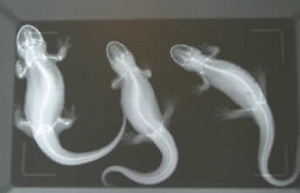by Dr. Rachel Thompson
Zoo veterinarians are often asked how we know when an animal is sick. It’s a very good question! Our patients can’t tell us where it hurts, so we look at non-verbal cues to give us insight on their health status. This can be difficult, especially with prey species because they are excellent at masking any signs of disease. In the wild, showing weakness usually results in getting picked off by a predator, or left behind by the herd, so animals are hard-wired to hide clinical signs.
The zookeepers are our first responders. They spend more time with the individual animals and have an intimate understanding of their normal behavior patterns, appetite, food preferences, and training. They are often the first to notice a subtle change in behavior or appetite, and will report it to the animal health staff so we can come take a look.
After getting a good background history from the zookeeper, our next step is usually a visual exam. During that exam, we start by watching from a distance: the further we are from the animal, the more normal they behave. When a new person enters an animal’s comfort zone, the animal’s behavior changes slightly and we want to see them before that happens. Things we might look for include:
- How is the animal interacting with the social group?
- What is the breath rate and quality (is it shallow and fast, or deep and even)?
- Is the animal walking normally?
- Is the body position normal, or is the abdomen hunched?
We look at all of this during the first few moments; the questions give us clues as to what may be happening beneath the skin.
As we approach an animal’s enclosure, we observe the animal’s reaction to us and to the zookeepers. Some animals, like red pandas and tamanduas, are trained to come over and “present” body regions for examination. Other animals, like cats and bears, can open their mouths to evaluate the teeth and gums. Their cooperation results in a reward for them, and more information for us.
Zoo veterinary staff takes all this information to decide if we know enough to prescribe treatment now, or if we need to perform a more involved diagnostic exam. Diagnostics in most species require anesthesia; an immobilized animal provides us with an opportunity to do a complete physical exam, collect blood and other samples, obtain radiographs or ultrasound images, and provide supportive care. After the animal is recovered from anesthesia, we evaluate all the test results and determine a treatment plan.




Get Social